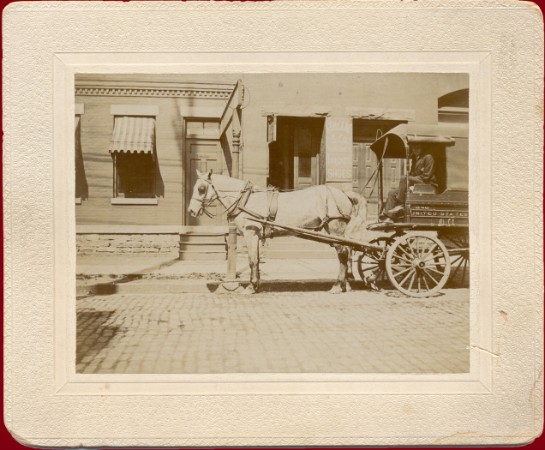No. 4 Bullet (1896 - 1900)
This shoe box like camera takes 4 x 5 inch (10 x 12.6 cm) pictures on roll film or glass plates. It is a rather basic instrument with a simple shutter and lens. There are only a few settings: - Distance
- Instantaneous speed or Time exposure
- Three apertures
In cameras that took larger pictures it was not possible to use a fixed focus lens, like in the smaller No. 2 Bullet. So the photographer had to set the proper distance on a small scale at one side of the camera. | |
The simple rotating shutter had one speed: about 1/30 of a second. To take photos indoors or outdoors in dull light, one could use the Time setting by pulling out a small lever. It stopped the rotating disc of the shutter halfways, where the opening in the disc came in front of the lens. After an exposure of a few seconds, one could close the shutter.
The three apertures have values of f/13.4 - f/18 and f/36. The stops were not marked with these values.
The largest stop of f/13.4 was used for all normal circumstances. The middle stop was used for very bright scenes, like at the beach, and the smallest aperture was used in combination with time exposures.
The camera could be loaded with a spool of film for 12 pictures. It cost 90 cents. Spoo size 103 was introduced for this camera and the No. 4 Bull's-Eye in 1896.
When not loaded with film, the photographer could use the camera with a single plate holder. This holder was inserted through a narrow door in the bottom panel. One single plate holder cost 75 cents and a dozen glass plates cost 65 cents.
The camera cost $ 15. About 10,000 were made.

Above a salesman sample picture showing the kind of photo that could be made with a
No. 4 Bullet and a No. 4 Bull's-Eye camera.

